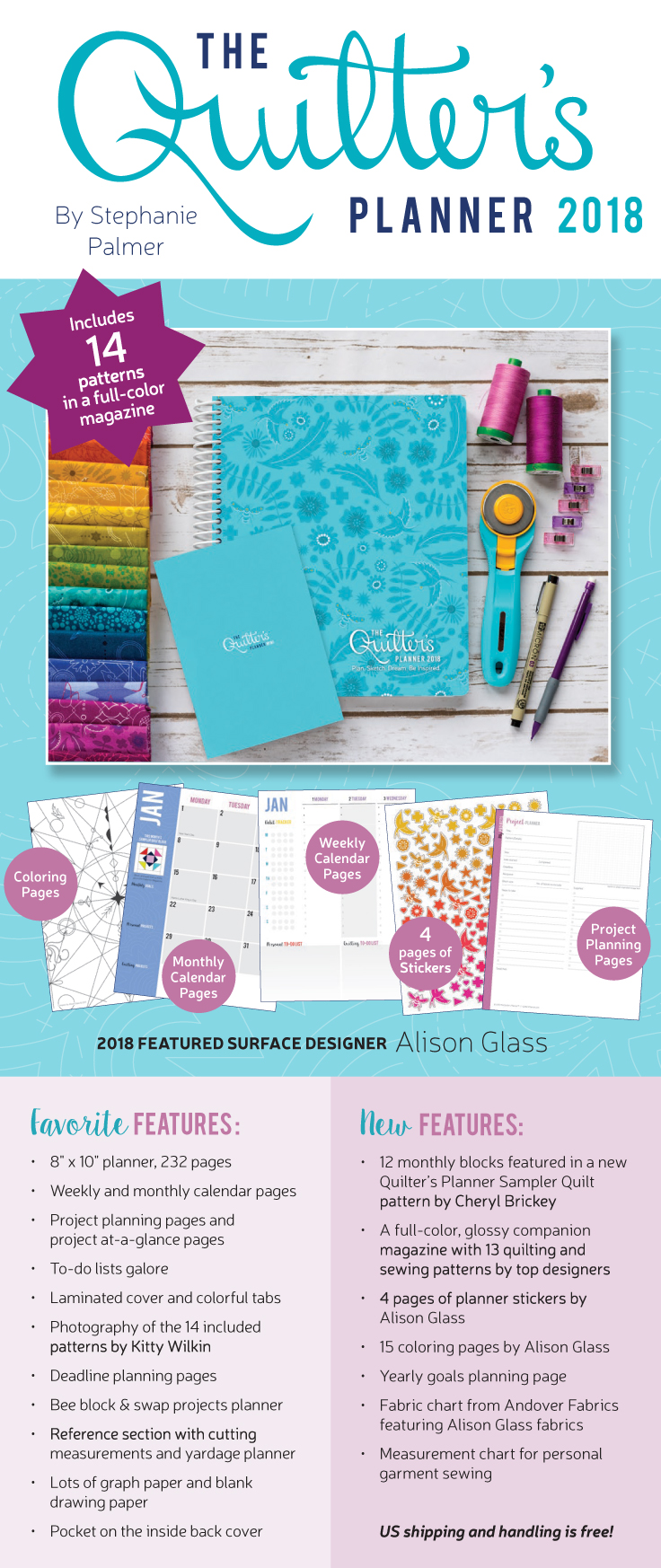You could image how excited I was to get an email from Stephanie Palmer of the Quilter's Planner (affiliate link) asking if I could create a quilt for the 2018 calendar!
The Quilter's Planner is a spiral bound weekly calendar made just for Makers like you!
- Look at the big picture and know what’s coming. The monthly calendars allow you to get a bird’s eye view of your year and months so you can plan ahead and stay organized.
- Manage your time. A daily appointment calendar allows you to easily keep track of where you need to be, and how you spend your time.
- Create a keepsake of your quilting and personal life. By tracking your projects and life, you are keeping a journal, a snap-shot of your life. You can look back in years to come and see how you’ve grown and all you’ve achieved.
- Be inspired. Inspirational quotes and beautiful artwork keep you motivated and encourage creativity.
- Customize it. This planner is designed to be tailored to your life. Whether you’re balancing work and your creative life, or setting new goals as a quilter, this planner gives you flexibility to use it in the way that serves you best.
- Follow your bliss. Manage your time and set realistic goals so you can do more of what you love!
- Get focused. Weekly and daily layouts, and room to prioritize your daily top three tasks that need to get done allow you to focus your attention on the most important things in your life.
The Quilter’s Planner is made in the USA.
The 2018 calendars feature artist is Alison Glass and is accompanied by 14 pattern contributors (including me!).
Daylily by Sharon Holland for the 2018 Quilter's Planner. Photo courtesy of Kitty Wilkin (NightQuilter)
I cannot wait for you to start making my Daylily quilt I stitched for the Quilter's Planner. I'm especially proud of the new technique I created that reduces the cutting and sewing time of the Clipped Flying Geese units by half!
Daylily by Sharon Holland for the 2018 Quilter's Planner. Photo courtesy of Kitty Wilkin (NightQuilter)
I used fabrics from my Tapestry and Bountiful fabric collections from Art Gallery Fabrics along with the AGF Pure Element fabrics Snow white solid. This quilt was fast to piece and simply machine quilted with parallel diagonal lines and based on the traditional Lily quilt block.
Daylily by Sharon Holland for the 2018 Quilter's Planner. Photo courtesy of Kitty Wilkin (NightQuilter)
These amazing photos were taken by Kitty Wilkin of Night Quilter. Kitty specializes in outdoor photography and is located on the Maine coastline. I adore this photo of my quilt against the orange daylilies. I call them ditchlilies and this orange type was the inspiration for my quilt because my own daylilies were in full bloom at the time.
The Quilter's Planner photo courtesy of The Quilter's Planner
Pre-orders are now available for the Quilter's Planner (affilate link). This year, shipping costs are included in the price of the planner along with four pages of stickers and quilt patterns will be in a separate magazine. If ordering outside the USA, order your planner through The Fat Quarter Shop.
The Quilter's Planner photo courtesy of The Quilter's Planner
























































